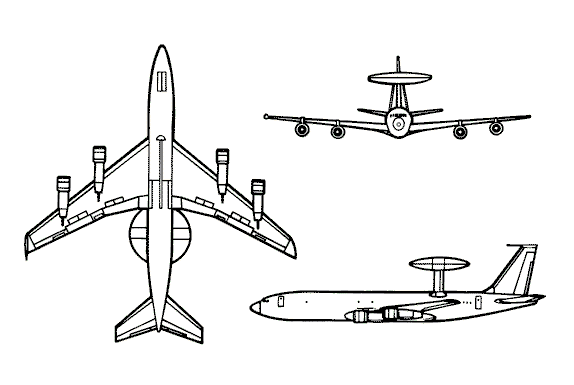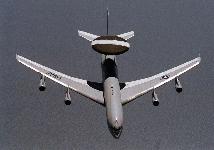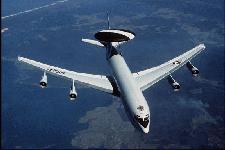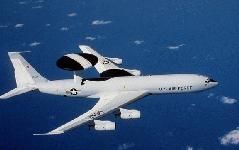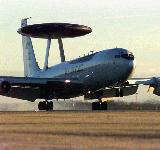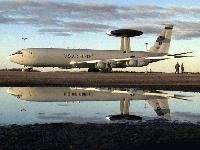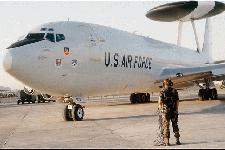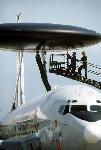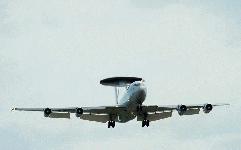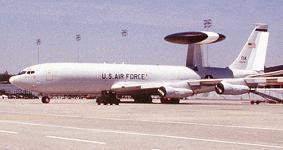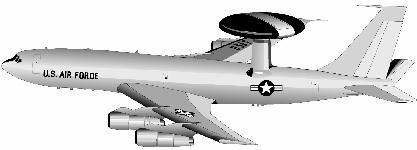| Specifications |
| Primary Function | Airborne surveillance, command, control and communications |
| Contractors | Prime: Boeing Aerospace Co.
Radar: Northrop Grumman |
| Power Plant | Four Pratt and Whitney TF33-PW-100A turbofan engines |
| Thrust | 21,000 pounds each engine |
| Length | 145 feet, 6 inches (44 meters) |
| Wingspan | 130 feet, 10 inches (39.7 meters) |
| Height | 41 feet, 4 inches (12.5 meters) |
| Rotodome | 30 feet in diameter (9.1 meters), 6 feet thick (1.8 meters), mounted 11 feet (3.33 meters) above fuselage |
| Speed | Optimum cruise 360 mph (Mach 0.48) |
| Ceiling | Above 29,000 feet (8,788 meters) |
| Maximum Takeoff Weight | 347,000 pounds (156,150 kilograms) |
| Endurance | More than 8 hours (unrefueled) |
| Unit Cost | Approximately $270 million |
| Crew | Flight crew of four plus mission crew of 13-19 specialists (mission crew size varies according to mission) |
| Date Deployed | March 1977 |
| Inventory | Active force, 33; Reserve, 0; Guard, 0 |
| Losses | An E-3 crashed 22 Sep 1995 in Alaska, reducing the US fleet by one. |
